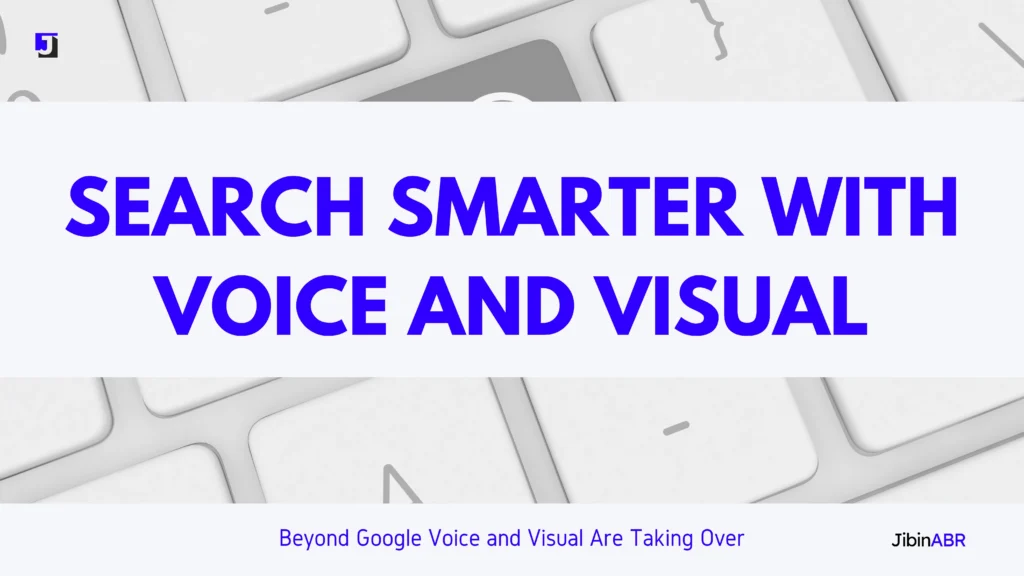Search Beyond Google Voice and Visual Searches Are Changing the Game

We’ve all done it. Asked Siri for a quick answer while driving. Took a picture of the product with Google Lens to search for buying sources. Or searched something using Alexa, without even touching a screen.
This is not the future anymore. It’s already here.
Voice and visual search are growing fast, and they’re changing how people find information and products online. If you’re a content creator, business owner, or digital marketer, it’s time to go beyond Google and optimize for how people actually search today.
What is Voice Search
Voice search lets people speak their queries out loud instead of typing them. Think of questions like:
“What is the weather today”
“Best pizza places near me”
“How do I remove a coffee stain”
These queries are often more natural and longer than typed ones. Users now speak to smart devices just as they would in a real conversation.
According to research, there are over 1 billion voice searches every month. And that number is only growing as more people use smart speakers, voice assistants, and hands-free tech.
What is Visual Search
Instead of typing, people can now search by simply uploading or capturing a photo.
You spot a sofa you love, snap a picture, and use Google Lens to discover where to buy it. That’s visual search in action.
It’s useful for things like:
Identifying unknown objects or landmarks
Finding fashion products or decor items
Discovering plant types, pets, or recipes
Platforms like Google, Pinterest, and Instagram are heavily investing in visual search capabilities because users are shifting towards more intuitive, image-based discovery.
Why Voice and Visual Searches Matter
Voice and visual search are:
Faster: No need to type
More natural: People speak how they think
Mobile-friendly: Ideal for on-the-go situations
Hands-free: Especially useful while driving, cooking, or multitasking
Most importantly, people are using these methods to find products, services, and answers — the same things businesses and creators want to be found for.
How to Optimize for Voice Search
Here are practical steps to help your content perform better in voice-based searches.
1. Use a Conversational Tone
Write like you speak. Keep your language simple, clear, and friendly. Answer questions naturally.
2. Answer Specific Questions
Use question-based headers like:
“How does voice search work”
“What are the benefits of visual search”
Then answer them clearly in the next line.
3. Create an FAQ Section
AI assistants often pull answers from FAQ sections. Use this space to cover common customer questions.
4. Focus on Long Tail Keywords
Instead of short keywords like “digital marketing,” go for specific phrases like “how to start digital marketing for a small business.”
5. Use Structured Data
Add schema markup (especially FAQ schema) to help search engines and AI understand your content layout better.
How to Optimize for Visual Search
Your visuals are your SEO assets. Here’s how to make them count:
1. Use High-Quality Images
Whether it’s a blog or product page, avoid blurry or generic stock images. Clear, original photos work best.
2. Rename Your Image Files
Instead of “IMG_1234.jpg,” use descriptive names like “organic-baby-soap.jpg.”
3. Add Alt Text to Images
Alt text helps both SEO and accessibility. Use clear descriptions like “Handmade cotton kurti for women.”
4. Write Detailed Product Descriptions
Help AI engines understand your visuals by backing them with informative content.
5. Use Pinterest and Google Lens
Share your visuals on platforms that support visual search and encourage users to explore your content visually.
Real-World Use Cases
Local businesses benefit from voice searches like “best biryani near me.”
Ecommerce brands can attract visual searchers looking for outfits, furniture, or skincare.
Bloggers and educators can rank for how-to questions through well-structured answers and clear visual guides.
Quick Checklist for Voice and Visual Optimization
For Voice
Use natural, spoken language
Answer “who, what, how, where” type questions
Add FAQ sections
Focus on long-form keywords
Use schema markup
For Visual
Add high-resolution, original images
Name images clearly
Use descriptive alt text
Optimize content around visuals
Share image-rich content on platforms like Pinterest
Final Thoughts
Search is no longer just about typing into Google. Today, users are relying heavily on speaking to devices and using photos instead of typing. If your content cannot be found in those moments, you’re missing out. The way we search is changing. Adapting today means setting the pace for tomorrow.
About the Author

JibinABR is a digital marketing strategist and content creator passionate about helping businesses grow through data-driven marketing, SEO, and social media. With years of hands-on experience and a strong personal brand, he shares actionable insights to help entrepreneurs and creators stay ahead in the digital world.